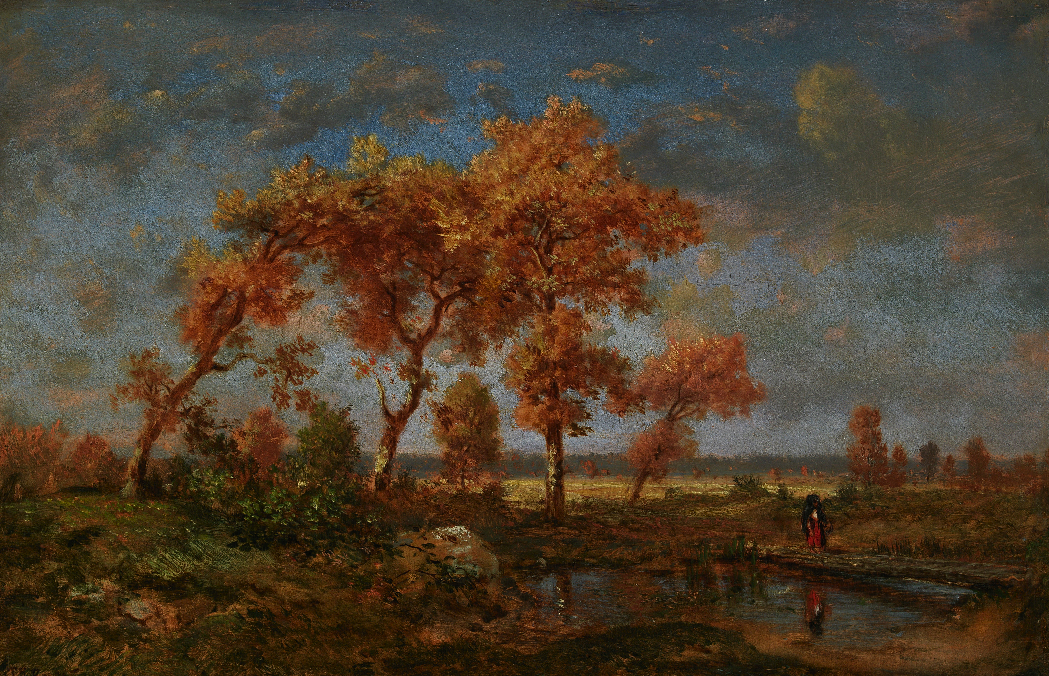
- France, c. 1848–50
- Oil on panel
- Inv. 453
- Signed: Th. Rousseau
Autumn landscape
Théodore Rousseau and the Barbizon School are intimately associated with the development of the French landscape tradition in the way they sought to depict nature in a non-idealised form. The contribution of the leader of this school of independent landscape painters, which met from 1830 onwards at the forest of Fontainebleau, was crucial for the way in which he devoted himself submissively to nature, in the search, as can be observed in this panel, for an objective approach to his subject. Painting in the open air as a method would in turn decisively influence the landscape painting practised from the second half of the 1870s onwards by artists associated with the Impressionist movement.
Heir to the work of the Dutch 17th-century masters, this painting also reveals the influence of early 19th-century English landscapes, in particular those of John Constable and Richard Parkes Bonington. Autumn colours, visible in the aging leaves on the trees, dominate a considerable part of the painting. Alone by a small puddle of water (a recurring feature in Rousseau’s works) can be seen a peasant woman on the right. The human presence, reduced to an almost imperceptible degree, reinforces the secondary role to which it is relegated in relation to the work’s main subject, the landscape.
Acquired by Calouste Gulbenkian from Graat et Madoulé, Paris, September 1920.
H. 21.5 cm; W. 33.6 cm
Schulman 1999
Michel Schulman, Théodore Rousseau. 1812–1867. Catalogue raisonné de l’oeuvre peint. Paris: Éditions de l’Amateur, 1999, p. 196, no. 303.
Sampaio 2009
Luísa Sampaio, Painting in the Calouste Gulbenkian Museum. Lisbon/Milan: Calouste Gulbenkian Museum/Skira, 2009, p. 196–7, cat. 87.